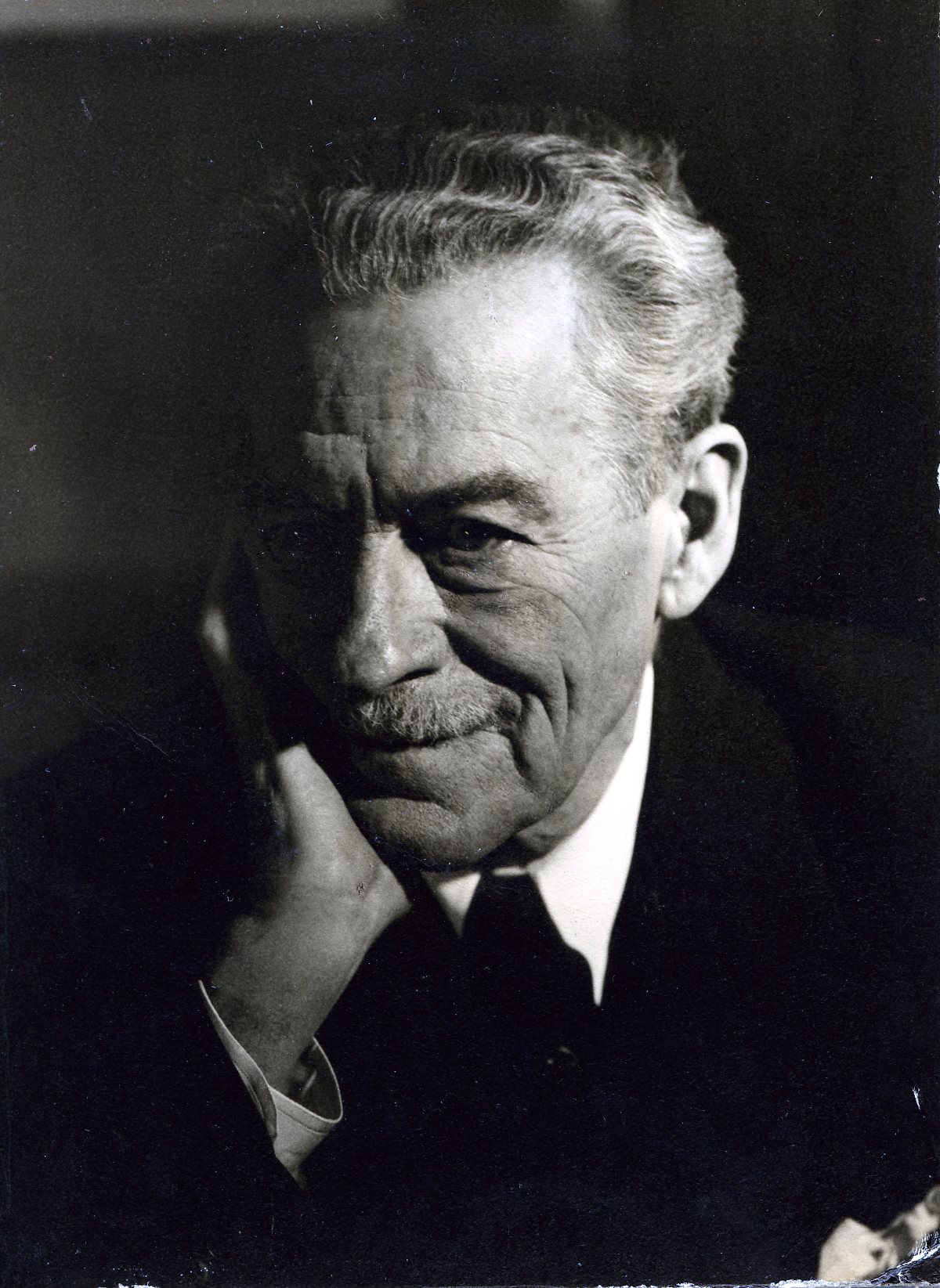Architect
Centurion, 1907–1960
Born 21 January 1874 in New York (Manhattan), New York
Died 12 January 1960 in New York (Manhattan), New York
Buried Memorial Cemetery of Saint John’s Church , Laurel Hollow, New York
, Laurel Hollow, New York
Proposed by John M. Carrère and William Adams Brown
Elected 7 December 1907 at age thirty-three
Archivist’s Note: First vice president of the Century Association, 1948–1949; second vice president 1947–1948; designated an honorary member in 1956. Son of Eugene Delano; grandson of William Adams; nephew of John Crosby Brown; brother of Moreau Delano; cousin of Thatcher M. Brown and William Adams Brown; father of William Richard P. Delano.
Proposer of:
Seconder of:
Century Memorial
Honorary membership, the highest award the Century gives, is conferred upon a member not so much to honor him as in recognition that he has honored our Association. We have rarely had a member whose work in the world has made us prouder to claim him than Billy Delano and we have never had a better friend. For more than fifty years our clubhouse has been warmer for his presence, and there has not been one of us who has not been happier for even a brief talk with him.
William Adams Delano was one of America’s first architects. Although New York was the center of his achievement, it did not confine his art. Some of its finest expression has been in Paris, in Venice, in New Haven, and in Washington. In Europe he carried America with him; he brought it respect and admiration from folk whose thought of us had been distorted by tourists and movies. Nothing could have shown better the deep understanding between Americans and Frenchmen who were aware of quiet beauty that knows no frontiers than the American Embassy building in the Avenue Gabriel in Paris. Into it went all that Billy Delano knew about France—and that was a great deal—and all of the American tradition that had endeared Franklin and Jefferson to the French, put together with Billy’s unique skill. And to the delight of many a Parisian, it was in perfect harmony with the old Paris.
His appointment as architectural consultant to the Commission of Renovation of the White House is said to have been the climax of his career. During his three years in this post, he was far more than a consultant. At the request of President Truman he designed the balcony that Truman’s opponents called a “back porch.” Such an addition was not unprecedented: historians could point to plenty of presidents who had made changes that had come to be recognized as improvements. It is likely that some of the criticism of the project stemmed from the fact that Mr. Truman wanted it. The objections evaporated, however, when the job was finished and the public and architects alike realized that the President had picked the ideal man for it.
Delano’s work on the White House was done under a painful handicap. No one heard him complain, but his close friends knew that for a man who was crippled by arthritis to have to walk on beams or girders when a misstep would have meant disaster was not easy. But his insistence on this kind of thoroughness in every detail was as characteristic as his courage.
Born in New York City in 1874, he lived to see many changes there, some of which he had little sympathy with. He used to say that he was glad that he had “had the luck to practice my profession in the first half of this century when architecture had a more personal touch.” The design of structures that were meant to be lived in had suffered, he thought, from absence of privacy. “I cannot believe man will always be happy,” he said, “living in a ‘goldfish bowl,’ where the ‘space content’ idea, now prevalent, mixes the children, the guests, the hosts and the kitchen—everything except the bathroom—in one undefined, or almost undefined area.”
Delano graduated from Yale in 1895 and took his Fine Arts degree three years later. He studied at the Ecole des Beaux Arts in Paris. For seven years from 1903, he was a professor of design at Columbia. He served for four years on the National Committee on Fine Arts and for sixteen years as a member of the National Capital Park and Planning Commission. In 1939, he served on the board of design for the New York World’s Fair. In the course of his career he was an academician of the National Academy of Design, a fellow of the American Institute of Architects, a member of the Beaux Arts Society and the Académie des Beaux Arts, Institut de France. He was an officer of the Legion of Honor. In 1953 he was awarded the highest professional honor of the American Institute of Architects—the gold medal.
Billy Delano had been with us since 1907. He was at the Club in every hour he could spare from his exacting profession. He served on every committee; in 1947 he was elected Second Vice-President and a year later First Vice-President. At the monthly meeting in May, 1956, he was elected to honorary membership.
Lately, when every step was painful to him, the warmth of the Century seemed to ease him and to compensate him for the effort of coming. We were sorry, then, that in his last year he stayed away. His courage had not failed but he thought his deafness had made him a burden to his friends. His friends thought otherwise, but it was like him to think of them first.
Roger Burlingame
1961 Century Association Yearbook

